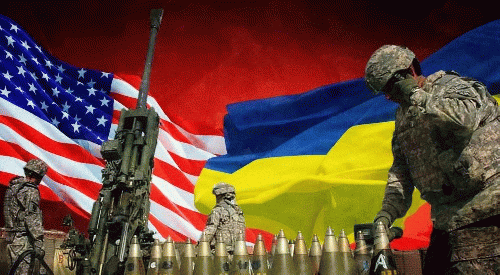A year into the Ukraine fight, American military aid has reached a staggering $30 billion, funding everything from night-vision goggles to Abrams tanks. Much of the weaponry was drawn from Pentagon stocks. Other systems must be produced in U.S. factories.
U.S. and NATO officials have touted the powerful effect of foreign arms on the battlefield, where they have enabled Ukrainian troops to hold Kremlin forces at bay and, in places like the southern city of Kherson, reverse Russian gains. But the armament effort also has rattled officials in the United States and Europe, depleting the military stockpiles of donor nations and revealing the gaps in their productive power.
The public support for the vast sums of aid being given to Ukraine grows softer and more divisive. Some observers are worried the Pentagon is not doing enough to replenish the billions of dollars in armaments that have left American stocks.
Research conducted by the Center for Strategic and International Studies (CSIS) shows the current output of American factories may be insufficient to prevent the depletion of stockpiles of key items the United States is providing Ukraine. Even at accelerated production rates, it is likely to take at least several years to recover the inventory of Javelin antitank missiles, Stinger surface-to-air missiles and other in-demand items.
"It is a wake-up call," Sen. Jack Reed (D-R.I.), chairman of the Senate Armed Services Committee, said in an interview, referring to the production problems the war has exposed. "We have to have an industrial base that can respond very quickly."
As the front lines have hardened during the frigid winter months, the ground war has become a bloody, artillery-heavy fight, with Ukrainian forces firing an average of 7,700 artillery shells a day, according to the Ukrainian military, greatly outpacing the U.S. prewar production rate of 14,000 155-mm rounds a month. In the first eight months after Russian's invasion, Ukrainian forces burned through 13 years worth of Stinger antiaircraft missiles and five years of Javelin missiles, according to Raytheon, which produces both weapons.
"What the Ukraine conflict showed is that, frankly, our defense industrial base was not at the level that we needed it to be to generate munitions," told undersecretary of defense for policy Colin Kahl, pointing to the effort to accelerate output of artillery shells, guided rockets and other items.
The problem is not limited to ammunition, nor to items being provided to Ukraine. According to Mark Cancian, a retired Marine officer and defense expert with CSIS, the pace of production at U.S. factories means it would take over 10 years to replace the U.S. fleet of UH-60 Black Hawk helicopters, and almost 20 years to replace the stock of advanced medium-range air-to-air missiles.
(Note: You can view every article as one long page if you sign up as an Advocate Member, or higher).








